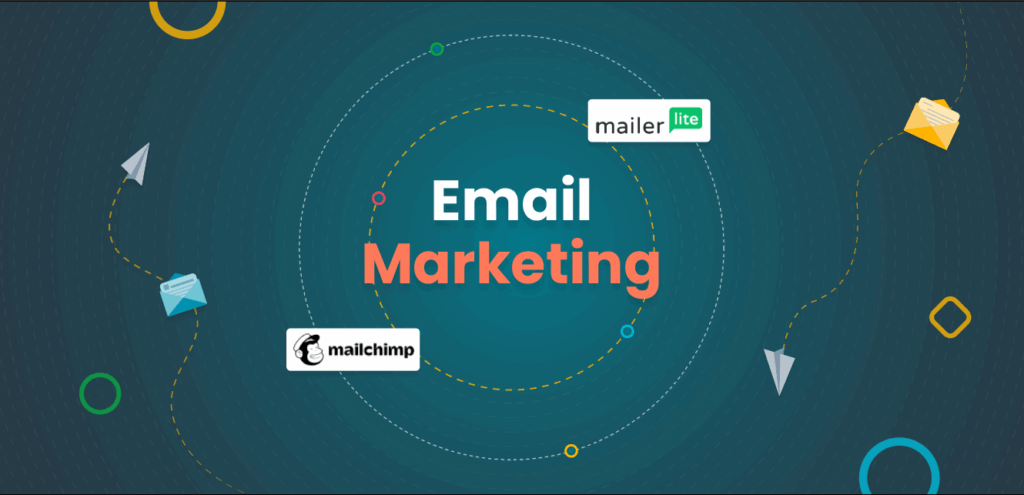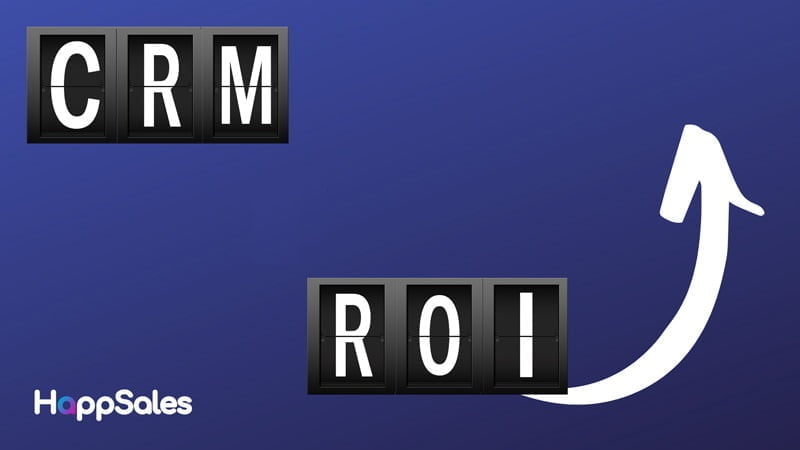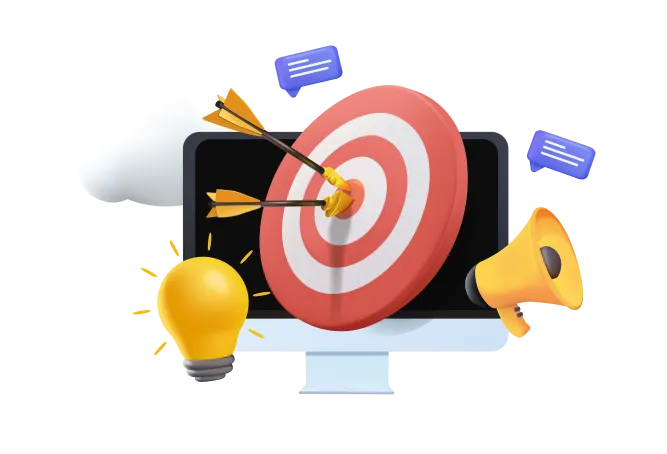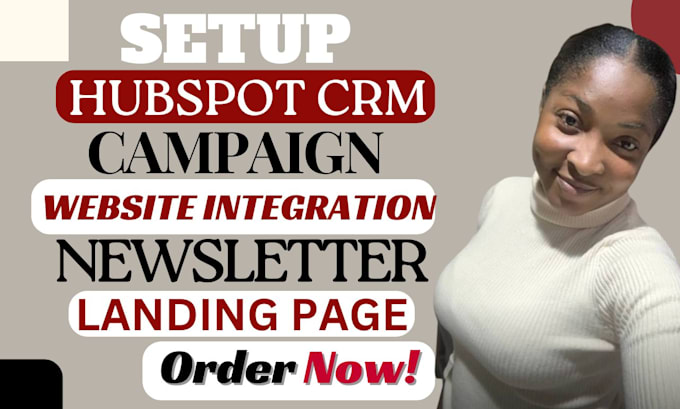CRM Email Marketing: The Ultimate Guide to Boosting Sales and Customer Loyalty

In the ever-evolving landscape of digital marketing, email remains a powerhouse. It’s a direct line to your audience, a platform for personalized communication, and a crucial tool for driving conversions. But simply sending out emails isn’t enough anymore. To truly harness the power of email, you need a strategic approach, one that integrates seamlessly with your customer relationship management (CRM) system. This is where CRM email marketing comes into play.
This comprehensive guide will delve deep into the world of CRM email marketing, exploring its benefits, strategies, and best practices. We’ll uncover how CRM and email marketing work together to create a powerful synergy, ultimately helping you boost sales, nurture customer relationships, and achieve sustainable growth.
What is CRM Email Marketing?
At its core, CRM email marketing is the practice of using your CRM system to inform your email marketing efforts. It involves leveraging the data stored within your CRM – customer demographics, purchase history, website behavior, and more – to create targeted, personalized, and highly effective email campaigns. Instead of sending generic emails to a broad audience, you can tailor your messages to specific customer segments, ensuring that each recipient receives content that is relevant to their needs and interests.
Think of it this way: your CRM is the brain, and your email marketing platform is the voice. The CRM provides the intelligence, while the email platform delivers the message. By connecting the two, you empower your email marketing to be smarter, more efficient, and more impactful.
The Benefits of CRM Email Marketing
Implementing a CRM email marketing strategy offers a multitude of benefits, including:
- Enhanced Personalization: With CRM data, you can personalize your emails based on individual customer preferences, purchase history, and behavior. This level of personalization fosters stronger connections and increases engagement.
- Improved Segmentation: CRM allows you to segment your audience into highly specific groups based on various criteria. This enables you to send targeted emails that resonate with each segment, leading to higher open rates, click-through rates, and conversions.
- Increased Conversion Rates: Personalized and targeted emails are far more likely to convert leads into customers and existing customers into repeat buyers. By delivering the right message to the right person at the right time, you can significantly boost your conversion rates.
- Better Customer Segmentation: Segmentation is key to success. CRM email marketing helps you to create segments based on behavior, demographics, and purchase history.
- Lead Nurturing: CRM data helps you nurture leads through the sales funnel. You can send automated email sequences that guide leads toward a purchase, providing them with valuable information and addressing their concerns along the way.
- Improved Customer Retention: By understanding your customers’ needs and preferences, you can create email campaigns that keep them engaged and loyal. Personalized recommendations, exclusive offers, and timely updates can all contribute to improved customer retention.
- Increased ROI: CRM email marketing is highly cost-effective. By targeting the right audience with the right message, you can maximize your return on investment (ROI) and generate more revenue from your email marketing efforts.
- Automation: CRM systems often include automation features that allow you to set up automated email sequences triggered by specific customer actions or events. This saves time and ensures that your customers receive timely and relevant communications.
- Data-Driven Insights: CRM provides valuable data and analytics that can help you track the performance of your email campaigns. You can monitor open rates, click-through rates, conversion rates, and other key metrics to identify what’s working and what’s not, allowing you to optimize your campaigns for better results.
- Better Customer Experience: Ultimately, CRM email marketing is all about providing a better customer experience. By delivering personalized, relevant, and timely communications, you can build stronger relationships with your customers and foster a sense of loyalty.
Key Components of a Successful CRM Email Marketing Strategy
To build a successful CRM email marketing strategy, you need to focus on the following key components:
1. Choose the Right CRM and Email Marketing Platform
The foundation of your CRM email marketing efforts is the software you choose. You need a CRM system that integrates seamlessly with your email marketing platform. Here are some important considerations when selecting your tools:
- Integration Capabilities: Ensure that your CRM and email marketing platform can easily integrate with each other. Look for platforms that offer native integrations or robust APIs.
- Data Management Features: Your CRM should allow you to store and manage customer data effectively. Look for features such as data segmentation, contact management, and reporting.
- Email Marketing Features: Your email marketing platform should offer features such as email templates, automation workflows, A/B testing, and detailed analytics.
- Scalability: Choose platforms that can scale with your business as it grows.
- Ease of Use: Opt for platforms that are user-friendly and easy to learn, so your team can quickly get up to speed.
- Pricing: Compare the pricing of different platforms and choose one that fits your budget.
Some popular CRM systems that integrate well with email marketing platforms include:
- HubSpot CRM: A free CRM with powerful email marketing features.
- Salesforce Sales Cloud: A comprehensive CRM for businesses of all sizes.
- Zoho CRM: A feature-rich CRM with affordable pricing.
- Pipedrive: A sales-focused CRM with a user-friendly interface.
- Microsoft Dynamics 365: A comprehensive CRM for enterprise-level businesses.
Popular email marketing platforms that integrate well with CRM systems include:
- Mailchimp: A popular email marketing platform with a wide range of features and integrations.
- Constant Contact: A user-friendly email marketing platform with excellent customer support.
- ActiveCampaign: A powerful email marketing platform with advanced automation features.
- GetResponse: An all-in-one marketing platform with email marketing, webinars, and landing pages.
- Sendinblue: A comprehensive marketing platform with email marketing, SMS marketing, and CRM features.
2. Data Collection and Segmentation
Data is the lifeblood of CRM email marketing. The more data you have about your customers, the better you can personalize your campaigns. Here are some ways to collect valuable customer data:
- Website Forms: Use forms on your website to collect customer information, such as their name, email address, and interests.
- Lead Magnets: Offer valuable content, such as ebooks, white papers, or webinars, in exchange for customer contact information.
- Surveys and Polls: Use surveys and polls to gather insights into your customers’ needs and preferences.
- Purchase History: Track your customers’ purchase history to understand their buying behavior.
- Website Behavior: Track your customers’ website activity to understand their interests and preferences.
- Social Media Data: Integrate your CRM with your social media platforms to collect data about your customers’ social media activity.
Once you have collected data, you can segment your audience into different groups based on various criteria, such as:
- Demographics: Age, gender, location, income, etc.
- Purchase History: Products purchased, average order value, frequency of purchases, etc.
- Website Behavior: Pages visited, content downloaded, time spent on site, etc.
- Engagement Level: Open rates, click-through rates, email engagement, etc.
- Lead Source: How they found your business (e.g., organic search, social media, paid ads).
3. Email Personalization
Personalization is key to creating engaging and effective email campaigns. Use the data you have collected to personalize your emails in the following ways:
- Personalized Subject Lines: Use the customer’s name or other relevant information in the subject line to grab their attention.
- Personalized Email Content: Tailor the content of your emails to each customer’s individual needs and interests.
- Personalized Product Recommendations: Recommend products or services based on the customer’s purchase history or browsing behavior.
- Personalized Offers and Promotions: Offer special discounts or promotions to specific customer segments.
- Personalized Calls to Action: Use calls to action that are relevant to each customer’s individual needs and interests.
4. Email Automation
Email automation allows you to send automated email sequences based on specific customer actions or events. This saves time and ensures that your customers receive timely and relevant communications. Here are some examples of email automation workflows:
- Welcome Emails: Send a welcome email to new subscribers, introducing your business and providing valuable information.
- Lead Nurturing Emails: Send a series of emails to nurture leads through the sales funnel, providing them with valuable information and addressing their concerns.
- Abandoned Cart Emails: Send an email to customers who have abandoned their shopping carts, reminding them of the items they left behind and encouraging them to complete their purchase.
- Post-Purchase Emails: Send a thank-you email to customers after they make a purchase, providing them with order confirmation, shipping updates, and other relevant information.
- Re-engagement Emails: Send an email to inactive subscribers to re-engage them and encourage them to interact with your business.
- Birthday Emails: Send a special email on a customer’s birthday, offering them a discount or a special promotion.
5. Email Design and Content Best Practices
Your email design and content play a crucial role in the success of your CRM email marketing campaigns. Here are some best practices to follow:
- Keep it Simple: Use a clean and uncluttered design that is easy to read.
- Use a Mobile-Friendly Design: Ensure that your emails are responsive and display correctly on all devices.
- Use High-Quality Images: Use visually appealing images that complement your content.
- Write Compelling Headlines: Write headlines that grab the reader’s attention and encourage them to read your email.
- Use Concise and Engaging Content: Keep your content concise and engaging, using clear and concise language.
- Use a Clear Call to Action: Include a clear call to action that tells the reader what you want them to do.
- Personalize Your Emails: Use the customer’s name and other relevant information to personalize your emails.
- Test Your Emails: Test your emails before sending them to ensure that they display correctly and that your links work.
- Follow Email Marketing Laws: Make sure your emails are compliant with CAN-SPAM and GDPR regulations.
6. Testing and Optimization
Testing and optimization are essential for improving the performance of your CRM email marketing campaigns. Here are some ways to test and optimize your campaigns:
- A/B Testing: Test different versions of your emails to see which ones perform best. Test different subject lines, email content, calls to action, and more.
- Analyze Your Data: Analyze your email marketing data to identify what’s working and what’s not. Track open rates, click-through rates, conversion rates, and other key metrics.
- Make Adjustments: Based on your data analysis, make adjustments to your campaigns to improve their performance.
- Continuously Improve: Continuously test and optimize your campaigns to ensure that they are delivering the best possible results.
CRM Email Marketing Strategies for Different Business Goals
CRM email marketing can be used to achieve a variety of business goals. Here are some strategies for different goals:
1. Generating Leads
To generate leads through CRM email marketing, consider these strategies:
- Offer Valuable Content: Create and offer valuable content, such as ebooks, white papers, or webinars, in exchange for contact information.
- Use Lead Magnets: Create compelling lead magnets that attract your target audience and encourage them to sign up for your email list.
- Segment Your Audience: Segment your audience to send targeted emails that are relevant to their interests and needs.
- Nurture Leads: Use automated email sequences to nurture leads through the sales funnel, providing them with valuable information and addressing their concerns.
- Track Lead Activity: Track lead activity on your website and in your emails to identify the most engaged leads.
- Qualify Leads: Use lead scoring to qualify leads based on their behavior and engagement.
2. Driving Sales
To drive sales through CRM email marketing, consider these strategies:
- Personalize Product Recommendations: Recommend products or services based on the customer’s purchase history or browsing behavior.
- Offer Exclusive Deals: Offer exclusive deals and promotions to specific customer segments.
- Send Abandoned Cart Emails: Send emails to customers who have abandoned their shopping carts, reminding them of the items they left behind and encouraging them to complete their purchase.
- Upsell and Cross-Sell: Use email to upsell and cross-sell products or services to existing customers.
- Run Flash Sales: Run flash sales and limited-time offers to create a sense of urgency.
- Promote New Products: Promote new products or services to your existing customers.
3. Improving Customer Retention
To improve customer retention through CRM email marketing, consider these strategies:
- Send Welcome Emails: Send a welcome email to new customers, introducing your business and providing valuable information.
- Provide Excellent Customer Service: Use email to provide excellent customer service, responding to customer inquiries and resolving issues quickly.
- Send Personalized Emails: Send personalized emails based on the customer’s purchase history, behavior, and preferences.
- Offer Exclusive Content: Offer exclusive content, such as tutorials, guides, or behind-the-scenes access, to your loyal customers.
- Run Loyalty Programs: Run loyalty programs to reward your customers for their repeat business.
- Gather Customer Feedback: Gather customer feedback through surveys and polls to understand their needs and preferences.
4. Increasing Website Traffic
To increase website traffic through CRM email marketing, consider these strategies:
- Promote Blog Posts: Promote your blog posts to your email subscribers.
- Share Valuable Content: Share valuable content, such as ebooks, white papers, or webinars, in your emails.
- Include Calls to Action: Include clear calls to action in your emails that direct readers to your website.
- Use Compelling Subject Lines: Use compelling subject lines that encourage readers to open your emails and click on your links.
- Segment Your Audience: Segment your audience to send targeted emails that are relevant to their interests and needs.
- Track Website Traffic: Track website traffic from your emails to see which campaigns are driving the most traffic.
Tips for Success
To maximize your success with CRM email marketing, keep these tips in mind:
- Know Your Audience: Understand your target audience’s needs, interests, and preferences.
- Set Clear Goals: Define your goals for your email marketing campaigns.
- Create High-Quality Content: Provide valuable and engaging content that resonates with your audience.
- Personalize Your Emails: Personalize your emails based on customer data.
- Use Automation Wisely: Use automation to streamline your email marketing efforts.
- Test and Optimize: Continuously test and optimize your campaigns to improve their performance.
- Stay Compliant: Comply with all email marketing laws and regulations.
- Monitor Your Results: Track your email marketing results to measure your success.
- Be Consistent: Send emails regularly to keep your audience engaged.
- Focus on the Customer: Always focus on providing value to your customers.
Conclusion
CRM email marketing is a powerful tool that can help you boost sales, nurture customer relationships, and achieve sustainable growth. By leveraging the data stored within your CRM system, you can create targeted, personalized, and highly effective email campaigns. By following the strategies and best practices outlined in this guide, you can build a successful CRM email marketing strategy that drives results and helps you achieve your business goals.
Embrace the power of CRM email marketing, and watch your business thrive. It’s more than just sending emails; it’s about building meaningful connections with your customers and fostering long-term loyalty. So, take the time to understand your audience, tailor your messages, and continuously refine your approach. The rewards of a well-executed CRM email marketing strategy are well worth the effort.



